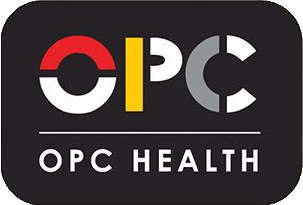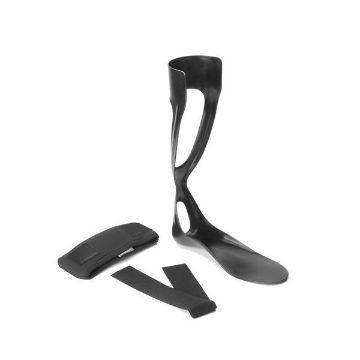AFOs
Ankle-foot orthoses, commonly known as AFOs, represent a pivotal solution in orthotic care, especially for those seeking support for muscle weakness, joint instability, or high muscle tone. At OPC Health, our AFO Braces and AFO Orthoses are custom-made for each individual, catering to the unique needs of the foot, ankle, and leg, finishing just below the knee.
What is an AFO?
AFOs are meticulously crafted lower limb orthoses, often prescribed to enhance mobility and address conditions such as muscle weakness, joint instability, or high muscle tone. At OPC Health, our AFOs play a crucial role in preventing deformities, increasing mobility, fostering independence, protecting and supporting healing injuries post-surgery, and reducing pain.
Putting the AFO on Correctly
Ensuring optimal comfort and effectiveness requires proper application. Follow these guidelines:
- Clean and dry the skin before application.
- Wear long, smooth socks underneath to prevent skin breakdown.
- Position the heel down into the heel cup, ensuring a snug fit.
- Tighten the ankle strap firmly, followed by the calf strap.
- Always wear shoes with AFOs, preferably wide and deep runners.
Standard Wear and Gradual Adjustment
Adjusting to AFOs may take time. Gradually increase wearing time by at least an hour each day.
Care and Maintenance of AFOs
- Clean AFOs regularly by wiping with a damp cloth and soapy water.
- Allow AFOs to air dry – do not use a heat source.
- Avoid wetting the straps; towel dry if necessary.
- Routinely check straps for wear and tear; contact us for minor repairs or replacements.
- Do not cut, file, heat, or damage AFOs.
ALLARD BABYGAIT AFO
ALLARD BLUEROCKER 2½ AFO
ALLARD KIDDIEGAIT AFO
ALLARD KIDDIEGAIT/ROCKER/FLOW SOFTKIT
The SoftKIT provides a soft interface between the orthosis and the tibial crest. An extra pad is inc...
ALLARD KIDDIEROCKER AFO
ALLARD TOEOFF 2½ AFO
ALLARD TOEOFF FLOW 2½ AFO
ALLARD TOEOFF/BLUEROCKER SOFTKIT
ALLARD YPSILON FLOW AFO
BECKER TRIPLE ACTION GEO
KIDDIEGAIT/ROCKER/FLOW REPLACEMENT STRAPS
Replacement straps for the KiddieGAIT, KiddieROCKER or KiddieFLOW. These straps can be used bilateral (opening on the medial or lateral side).
KIDDIEGAIT/ROCKER/FLOW SOFTSHELL
SoftSHELL combines the soft interface system of theSoftKIT with a fun-print textile cover, made just...
LEAF SPRING AFO
MATRIX MAX AFO
NAVIGAIT AFO
OTTOBOCK AFO 28U90
OTTOBOCK AFO BLACK
OTTOBOCK GoOn AFO 28U70
PUSH ORTHO AFO
SUPRA-LITE AFO
THUASNE SPRYSTEP AFO
TURBOMED ASSESSMENT TOOL
TURBOMED XTERN CLASSIC
TURBOMED XTERN FRONTIER AFO
TURBOMED XTERN SUMMIT AFO
THUASNE SPRYSTEP PAEDIATRIC DEMONSTRATION KIT
THUASNE SPRYSTEP PLUS AFO
THUASNE SPRYSTEP MAX
THUASNE SPRYSTEP FLEX AFO
THUASNE SPRYSTEP PAEDIATRIC AFO
OAPL HEEL CUSHION
HEALPRO BED RESTING AFO
MALLEO NEUREXA PRO
DYNAMIC WALK DOUBLE DOUBLE AFO
ALLARD TOEOFF 2.0 AFO
DYNAMIC WALK
TOEOFF/BLUEROCKER 2.0 COMFORTKIT
ComfortKIT™ is our premium interface for ToeOFF® and BlueROCKER®. Available for Original, 2.0 and 2 ½ model AFOs.
DICTUS BAND
DICTUS FLEX
TURBOMED XTERN CLASSIC+
COYOTE DYNAMIC STRUT FITTING KIT
The demo samples are to help decide the best flex option for the patient. The Fitting Kits are for trial only and are meant to be replaced with standard product.
COYOTE DYNAMIC STRUT
Dynamic AFO Strut Design that combines a unique combination of strength and flex that other posterior dynamic struts do not offer.
COYOTE MINI DYNAMIC STRUT
Coyote’s Mini Dynamic Strut is made from Resilergy™ the same responsive composite material as our standard strut just a smaller size.
Allard KiddieFLOW Paediatric AFO
KiddieFLOW™ bridges the gap between insoles/SMOs and our current KiddieGAIT® and KiddieROCKER®. KiddieFLOW™ allows for better control of foot positioning in late swing which, in turn, aids stability during stance. It also gives dorsiflexion assistance in the swing phase, while allowing for more range of motion in stance phase.
METHOD TA TRIPLE ACTION AFO
The Method TA™ AFO is a prefabricated, custom-fit orthotic solution that can be used to treat a broad range of pathologic gait abnormalities in stroke, CP, MMC, CMT and other complex neuromotor disorders.























































































































































































